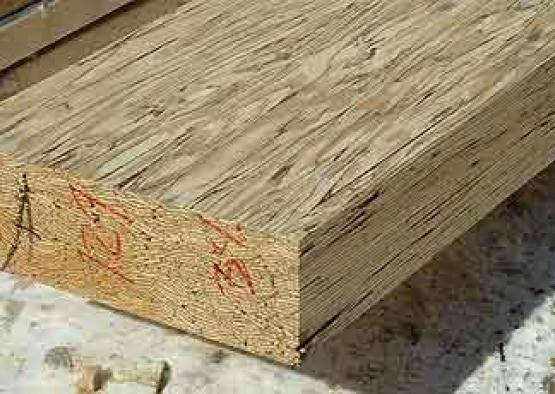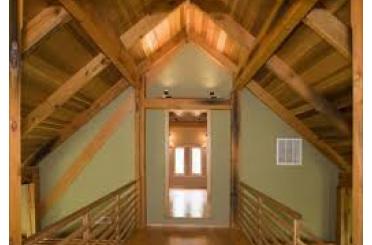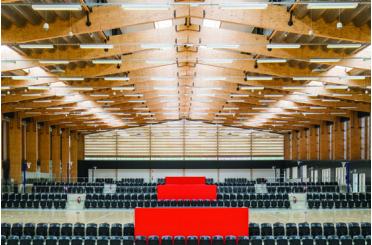
Structural Composite Lumber (SCL) is the term used to describe a family of engineered wood products used for structural applications. SCL products include Laminated Veneer Lumber (LVL), Laminated Strand Lumber (LSL), Parallel Strand Lumber (PSL) and Oriented Strand Lumber (OSL).
While popular in North America, only some SCL products are used or available in Australia; the main one being LVL.
Manufacturing
SCL products are made by layering either veneers, strands or flakes with adhesives. This process creates a billet which is then cured in a heated press before being cut to size.
One of the main advantages of using SCL is that it offers a material that remains stable and is much less prone to warping, splitting or shrinking when compared to sawn timber. SCL products can also take greater loads than the sawn timber equivalent.
SCL can be used for a range of structural applications including beams, joists, studs, columns, rafters and I-Joist and I-Beam flanges.
Laminated Veneer Lumber (LVL)
LVL is the most common SCL product and is widely used in the Australian building and construction industry.
LVL is a high-strength engineered wood product. It is comparable in strength to solid timber, concrete and steel and is manufactured by bonding together rotary peeled or sliced thin wood veneers under heat and pressure. It is used for permanent structural applications including beams, lintels, purlins, truss chords and formwork.
Prior to lamination, the veneers are dried and the grains of each veneer are oriented in the same direction. This makes LVL stronger, straighter and more uniform than solid timber and overcomes some of timber's natural limitations such as strength-reducing knots. LVL is less prone to shrinking or warping. LVL can also support heavier loads and span longer distances than normal timber.
Get more detailed information about LVL.
Laminated Strand Lumber (LSL)
Rather than being manufactured from veneers, as the name suggests LSL is produced from timber strands. LSL may be used for a range of framing applications, but will generally have lower strength and stiffness properties than LVL.
There is currently no Australian product standard or design rules for LSL, however manufacturers will have their own engineering data for the products they manufacture.
Parallel Strand Lumber (PSL)
PSL is manufactured by bonding together veneer strands under high pressure. The veneer strands are aligned parallel to increase strength, resulting in the creation of a rectangular beam.
The manufacturing process is similar to that of plywood, whereby veneer sheets are created and then cut to size.
PSL strands are then coated with an adhesive before the strands are turned into a finished billet that is then cut to custom sizes. Larger dimensions can be created by edge gluing billets. As with other engineered products, lengths are limited by transportation requirements.
PSL is used for post and beam construction as well as beams and lintels. Some PSL proprietary products may be available in Australia, however it best to check with individual suppliers.
Oriented Strand Lumber (OSL)
OSL is produced in a similar way to OSB, except that the panels are cut into lumber dimensions.
OSL is also similar to LSL, except that it uses shorter veneer strands, although it still provides a high length-to-thickness ratio. OSL will generally have lower strength and stiffness properties than LVL or PSL.
OSL may be used in beams and other framing applications. OSL and LSL tend to have a mottled appearance without the grain pattern for a 'timber look'. This limits the appearance applications in which these products can be used.
OSL is currently only produced in North America.

Architectural Roof Trusses
Framing



